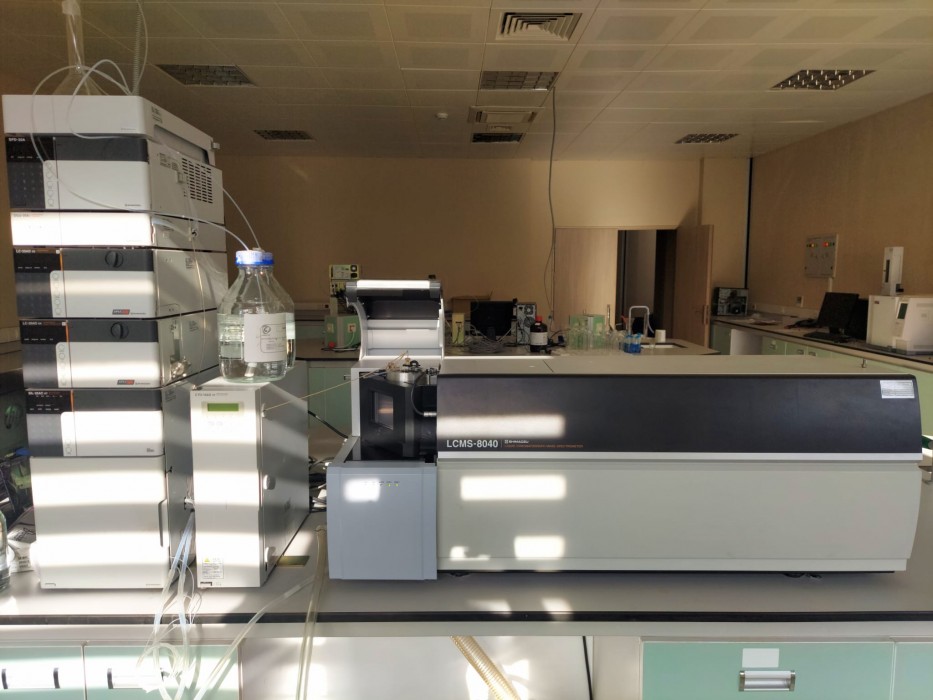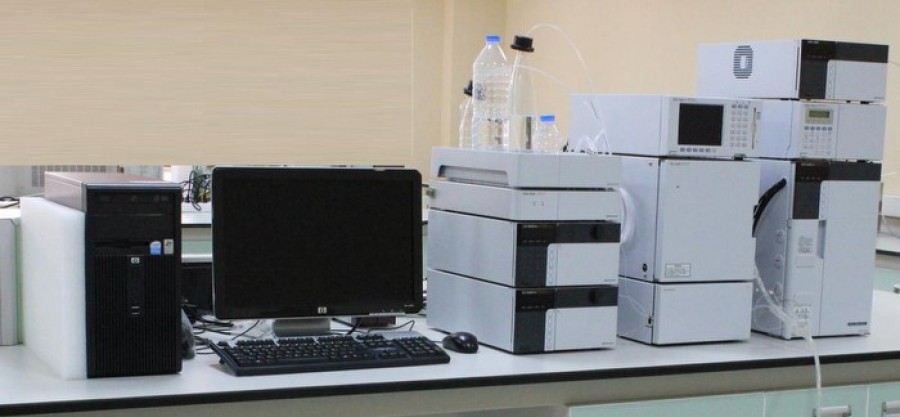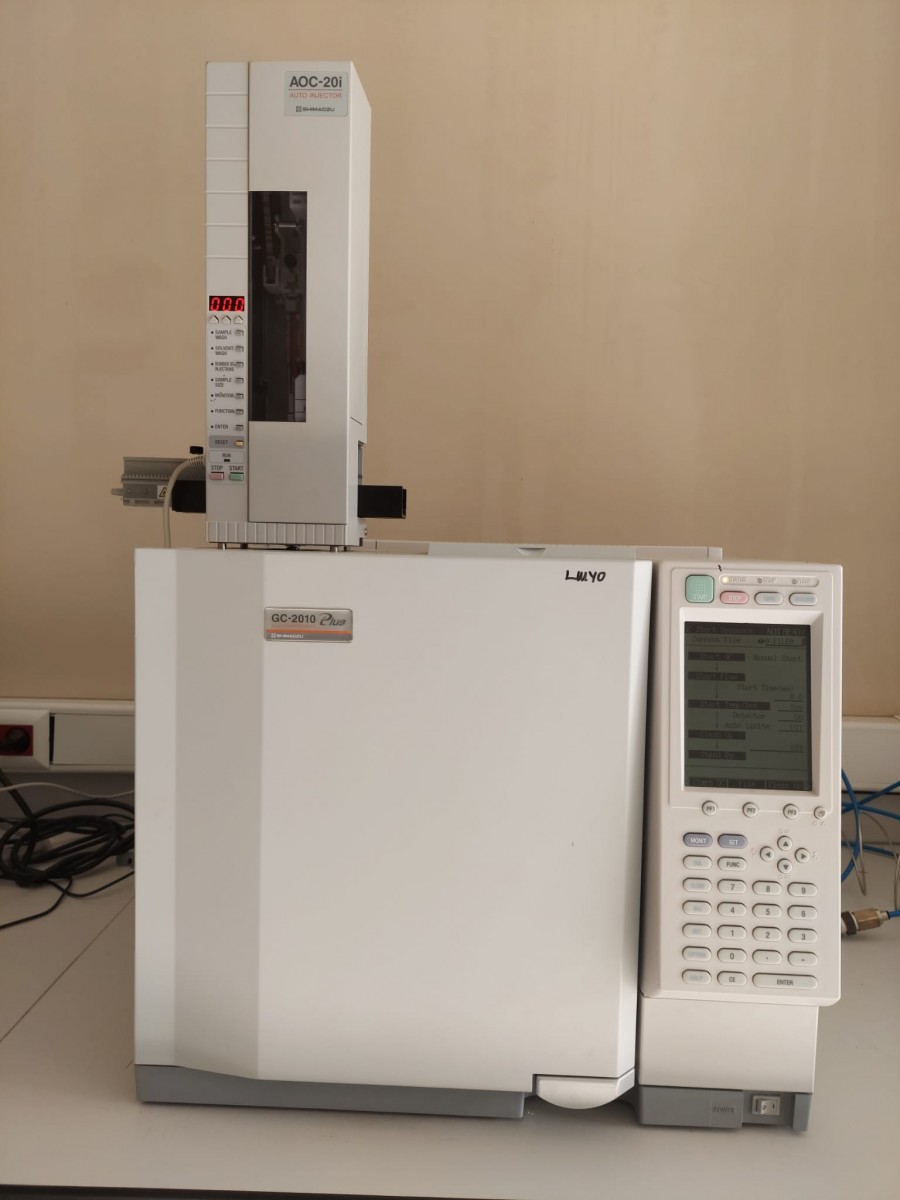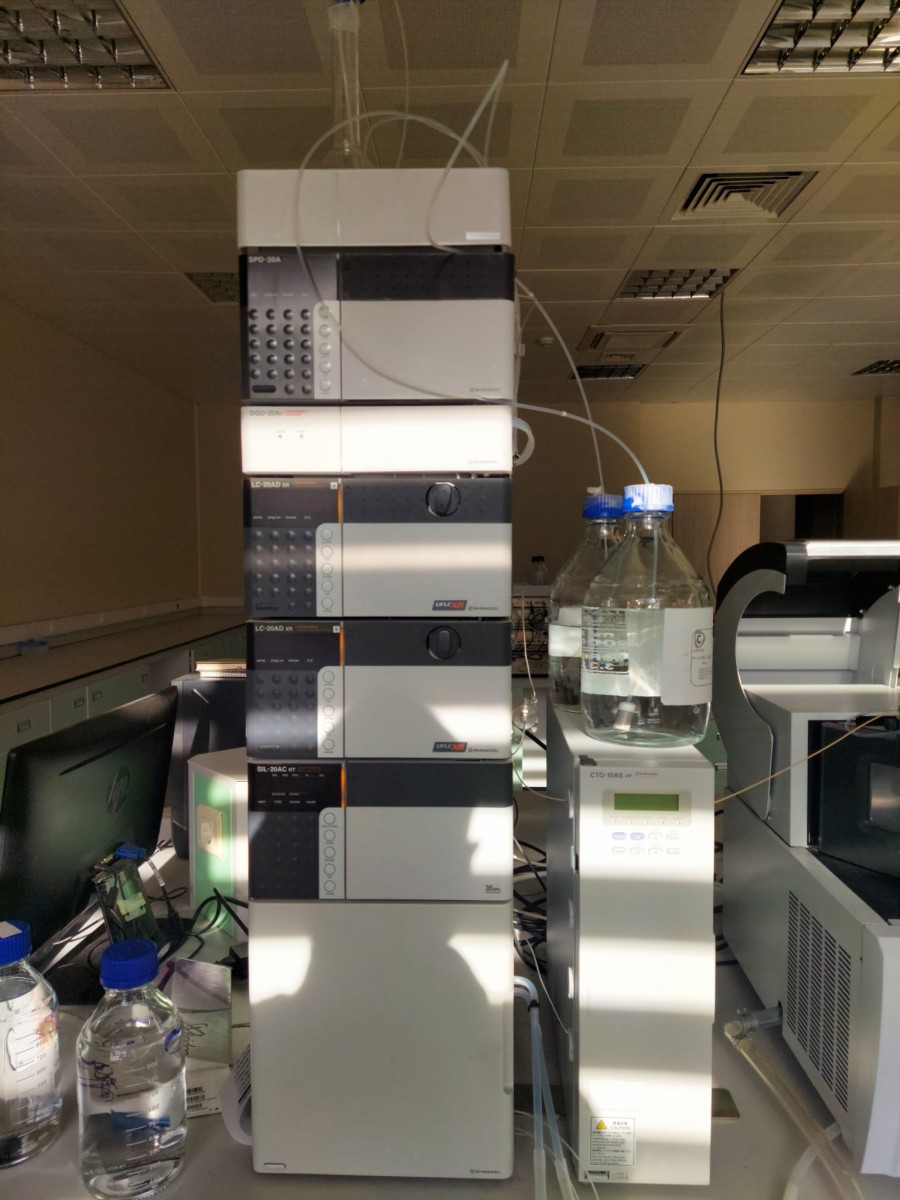| Instrument: LC/MS/MS Brand / Model: SHIMADZU LC-MSMS-8040 | |||
 |
Working Principle:
It provides information about the quantity, structure, and molecular weight of components present in the sample. It has a wide range of applications, from analyzing small pharmaceutical compounds to large proteins, as well as polar, ionic, thermally unstable, and non-volatile compounds.
With LC-MS/MS, the molecular weight of the composition can be determined rapidly. MS/MS provides high sensitivity and precision, especially for quantitative applications. It can perform exceptionally well in pharmaceutical, food, and environmental analyses. This device allows the measurement of drugs and metabolites, even at low concentrations, based on their ion charge.
It is an advanced technology product and performs quantitative determinations. In the LC-MS/MS technique, molecules separated based on their physicochemical properties in high-pressure liquid chromatography are analyzed by a mass detector. In the first quadrupole filter, molecules separated based on the m/z (mass/charge) ratio are subjected to fragmentation with a high-purity special gas known as "collision gas."
In the second quadrupole filter, the diagnosis and quantification of ions generated as a result of fragmentation (daughter or product ion) are performed. Although many molecules may share the same m/z ratio, the number of molecules with the same fragmentation ions in nature is approximately 1/10,000. Therefore, the LC-MS/MS technique is considered almost as specific as a paternity test and allows for the determination of the quantity of substances at very low concentrations. Moreover, there is no need for result verification.
While standard HPLC (High-Performance Liquid Chromatography) technique identifies substances solely based on retention time, LC-MS/MS technology evaluates substances in addition to retention time using "precursor and product" ions |
||
| Applications: -- Sample Acceptance Conditions: |
|||
| Instrument: Ion chromatography Brand / Model: SHIMADZU LC-20A SP | |||
 |
Working Principle: In recent years, environmental analysis has gained significant importance worldwide, including in our country. Various measurement methods are used for these analyses, but the most accurate and precise results can be obtained using Ion Chromatography equipment.
Shimadzu offers a simple and high-performance ion chromatography system that employs non-suppressor technology. This feature is achieved through a microprocessor and two-stage temperature control in its structure, which oversees a highly sensitive conductivity detector. By adding necessary components, this simple system can be transformed into a fully automated system. It is designed for the analysis of substances that contribute to environmental pollution.
Measurement precision: Within the scale range of 0.1 to 5120 µS/cm Flow rate control range: From 0.001 to 5 ml/min |
||
| Applications: It is prominently used for water analysis, with a focus on applications such as drinking water, rainwater, and wastewater. Typically, it is employed for the analysis of anions, cations, and transition metals in these water samples. Sample Acceptance Conditions: For instance, the salinity value should be specified, and the minimum sample quantity should be at least 100 mL |
|||
| Instrument: GC-FID Brand / Model: SHIMADZU GC-2010 PLUS | |||
 |
Working Principle:
Gas chromatography is employed to separate components in a mixture that can exist in the gas phase or can be easily vaporized. In gas chromatography, the substances in the mixture are separated from each other and then determined by ionization based on the time it takes for them to exit the column |
||
| Applications: It is used in laboratories related to biochemistry, biotechnology, petrochemistry, pharmacology, genetics, food, forensic toxicology, as well as in the analysis of clean water, wastewater, solid waste, and waste oil samples. Sample Acceptance Conditions: |
|||
| Instrument: HPLC Brand / Model: SHIMADZU | |||
 |
Working Principle:
High-Performance Liquid Chromatography (HPLC) is a method that relies on the interaction of components dissolved in a liquid with a stationary phase, typically a solid support inside a column. As these components interact differently within the column and move at varying rates, they eventually separate from each other and exit the column at different times. This forms the basis for the separation of components in a liquid. |
||
| Applications: HPLC is used for the separation of non-volatile chemical and biological compounds. Sample Acceptance Conditions: |
|||